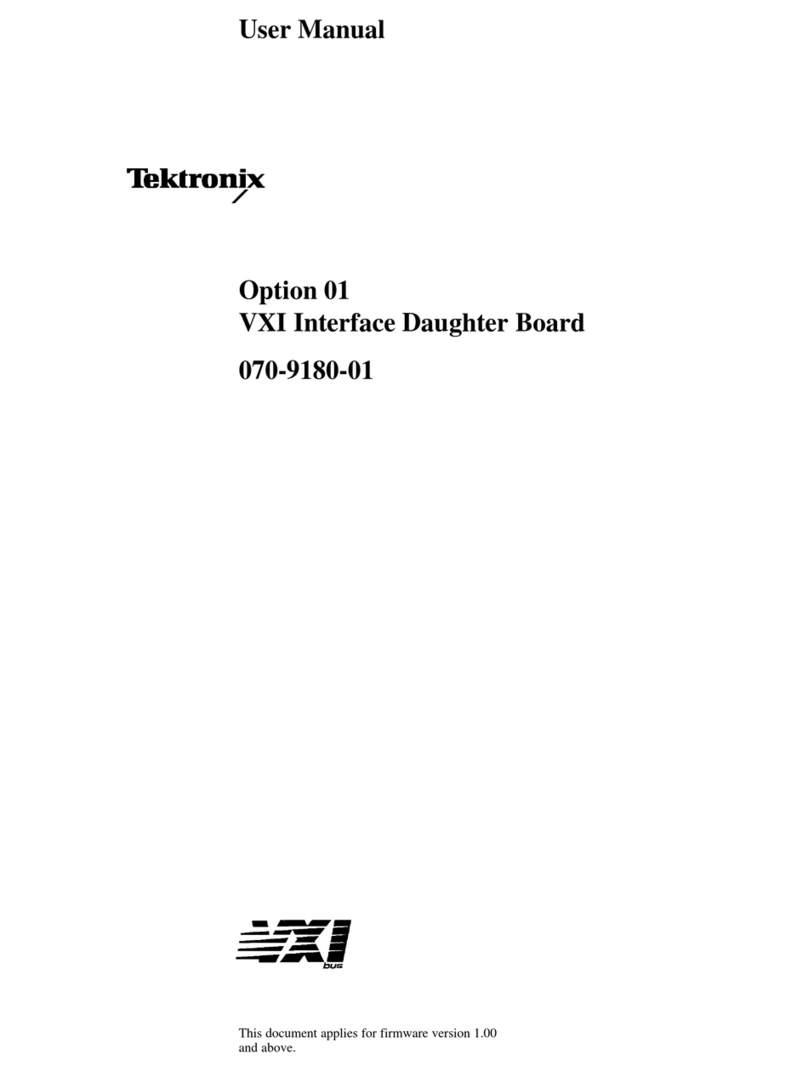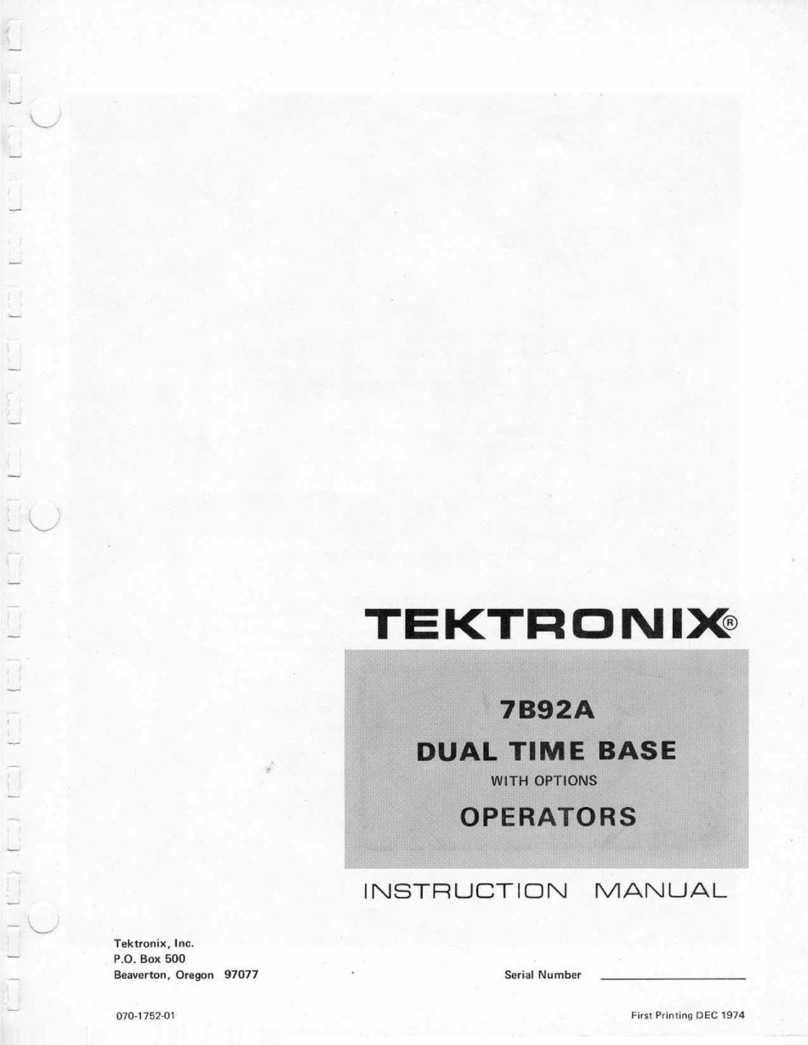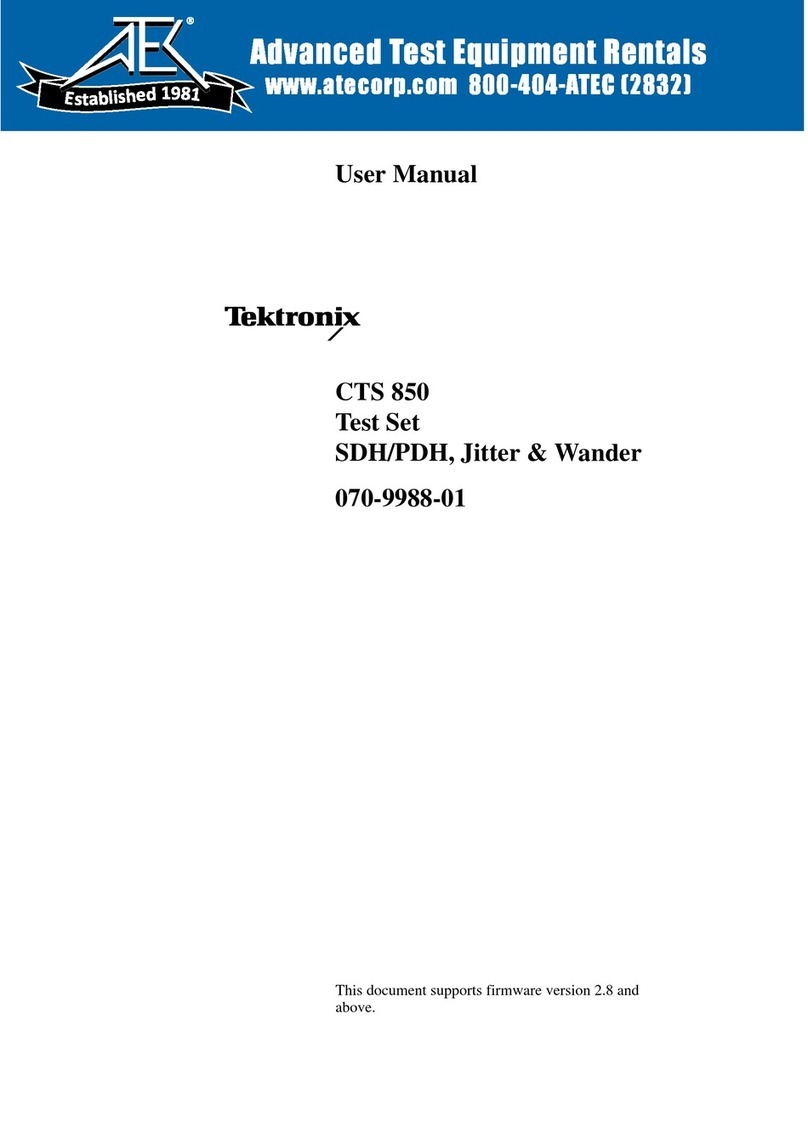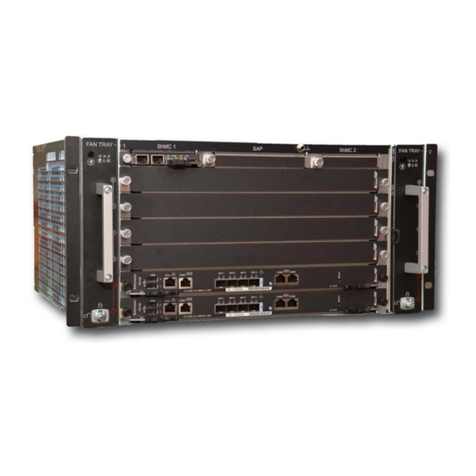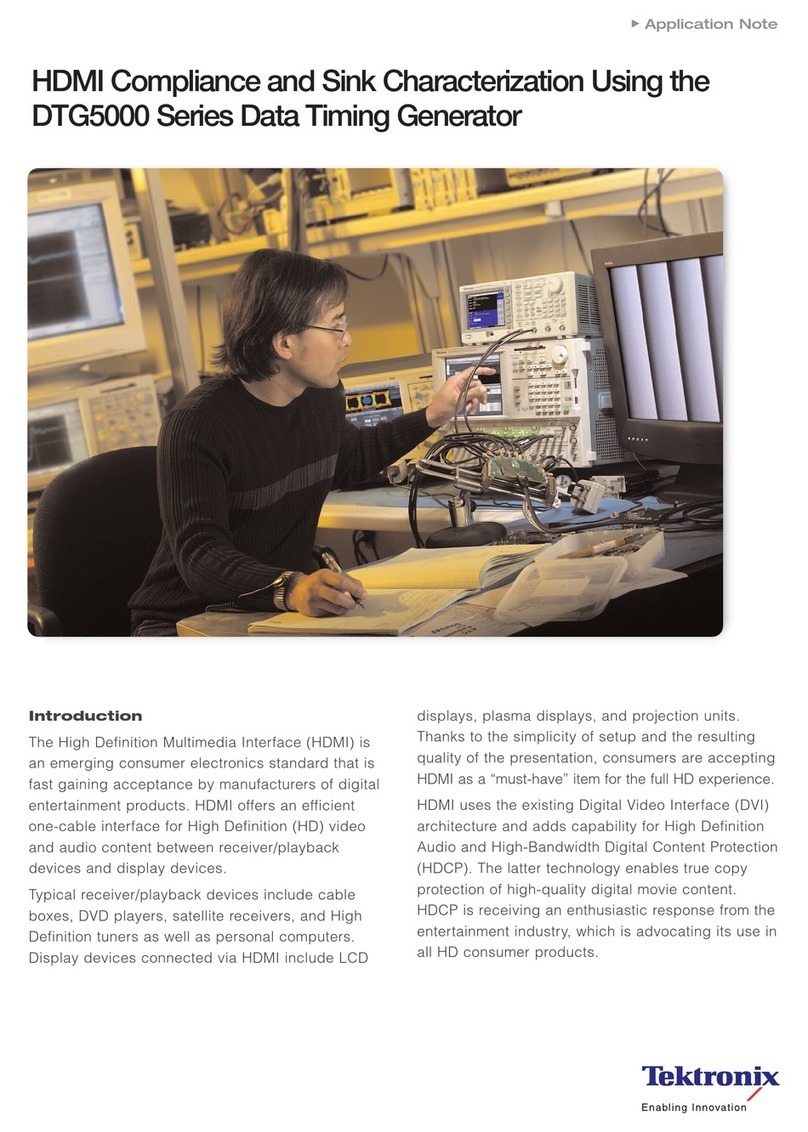7B87 Instruction
TABLE OF CONTENTS
PAGE PAGE
LIST OF ILLUSTRATIONS
LIST OF TABLES iv
OPERATOfiS SAFETY SUMMARY w
SERVICING SAFETY SUMMARY, wit
SECTION 1OPERATING INSTRUCTIONS
INSTALLATION t-1
CONTROLS. CONNECTORS. AND INDICATORS 1-1
FUNCTIONAL CHECK 1-1
SETUP PROCEDURE 1-1
SWEEP FUNCTIONS 1-4
TRIGGERING FUNCTIONS 1-4
PRETRIGGER ACQUIRE CLOCK FUNCTIONS 1-S
GENERAL OPERATING INFORMATION 1-6
TRIGGERING SWITCH LOGIC 1-6
TRIGGERING MOOES 1-6
TRIGGER COUPLING 1-9
TRIGGER SOURCE 1-9
TRIGGER SLOPE 1-11
TRIGGER LEVEL 1-11
HORIZONTAL SWEEP RATES 1-11
TIME MEASUREMENT 1-11
SWEEP MAGNIFICATION 1-11
VARIABLE HOLD OFF 1-12
MAINFRAME OPERATING MOOES 1-12
APPLICATIONS 1-12
TIME INTERVAL MEASUREMENTS 1-12
PERIOD AND FREQUENCY MEASUREMENTS ...1-12
RISE TIME AND FALL-TIME MEASUREMENTS ..1-13
PULSE WIDTH MEASUREMENTS 1-14
SECTION 2SPECIFICATION
STANDARD ACCESSORIES 2-4
LmmIhmmJI
THE REMAINING PORTION OF THIS TABLE OF CONTENTS
LISTS SERVICING INSTRUCTIONS. THESE SERVICING
INSTRUCTIONS ARE FOR USE BY QUALIFIED PERSONNEL
ONLY. TO AVOID ELECTRICAL SHOCK. OO NOT PERFORM
ANY SERVICING OTHER THAN THAT CALLED OUT IN THE
OPERATING INSTRUCTIONS UNLESS QUALIFIED TO DO
SO.
SECTIONS THEORY OF OPERATION
BLOCK DIAGRAM DESCRIPTION 3-1
TRIGGER GENERATOR 3-1
SWFFP GENERATOR 3-1
PICKOFF AMPLIFIER AND DELAY GATE
GENERATOR 3-1
LOGIC 3-1
DIGITAL VOLTMETER 3-1
CLOCK GENERATOR 3-1
DETAILED CIRCUIT DESCRIPTION 3-1
FRONT-PANEL DISTRIBUTION .3-3
TRIGGER GENERATOR 3-3
EXTERNAL SOURCE 3-3
INTERNAL AND LINE SOURCE 3-3
TRIGGER SOURCE SELECTOR AND
AMPLIFIER 3-3
PEAK TO-PEAK AUTO 3-3
SLOPE SELECTOR AND TRIGGER
GENERATOR 3-5
GATE GENERATOR 3-5
LOGIC 3-5
SWEEP MOOES 3-5
HOLD OFF TIMING 3-6
LOCKOUT BUFFER AMPLIFIER 3-7
HOLD OFF OUTPUT AMPLIFIER 3-7
SWEEP GENERATOR 3-7
TIMING CURRENT SOURCE 3-7
RAMP GENERATOR 3-10
HORIZONTAL PREAMPLIFIER 3-10
SWEEP GATE GENERATOR 3-10
DVM 3-10
DELAY TIME COMPARATOR AND DELAY
GATE GENERATOR 3-10
OIGHAL VOLTMETER 3-11
DELAY COMPARISON VOLTAGE-TO RAMP
CONVERTER 3-12
COMPARATOR 3-12
REFERENCE CURRENT SOURCE 3-12
REFERENCE CURRENT INVERTER 312
COUNTER AND ENCODER 3-12
CLOCK GENERATOR 3-12
CONTROL LOGIC 3-13
OSCILLATOR 3-13
FIRST DIVIDER 3-15
XI X10MULTIPIEXER 3-15
DECADE DIVIDER 3-15
INTERNAL CLOCK MULTIPLEXER 3-15
OUTPUT CLOCK MULTIPLEXER 3-15
INTENSIFY CIRCUIT 3-15
7B87 IN AHORIZ PLUG-IN COMPARTMENT 316
IN1FRNAL BUTTON PRESSED 3-16
7B87 IN BHORIZ PLUG IN COMPARTMENT 3-16
INTERNAL BUnON PRESSED 316
TIME DIVISION AND READOUT SWITCHING 3-17
BASIC READOUT SYSTEM 3-17
TIME DIVISION READOUT 3-17
ACOUIRE-STOP DELAY TIME READOUT 3-17
INTERFACE CONNECTIONS AND POWER
SUPPLY 3-17
SECTION 4MAINTENANCE
PREVENTIVE MAINTENANCE 4-1
CLEANING 41
EXTERIOR 4-1
INTERIOR 41
SWITCH CONTACTS 4-1
REV JUN 1981






